Seedling Tray
A seedling tray is a nursery container designed to provide a controlled environment for germination and early plant growth. With structured cavities, it ensures seedlings receive optimal aeration, drainage, and space for root development. Seedling trays help improve germination rates, reduce seed loss, and deliver uniform, high-quality seedlings ready for transplanting.
Tray Cell
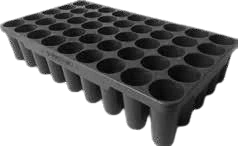
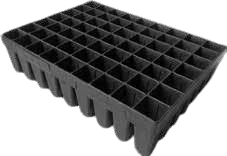
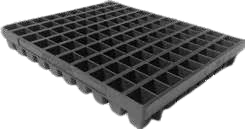
Tray 45 Cell
Cell Count Tray : 45
Dimension (mm) : 270×480
Volume per cell (ml): 130
Tray Height (mm) : 100
Tray 63 Cell
- Cell Count Tray : 63
- Dimension (mm) : 240×360
- Volume per cell(ml): 78
- Tray Height (mm) : 90
Tray 100 Cell
- Cell Count Tray : 100
- Dimension (mm) : 280×340
- Volume per cell(ml): 18,5
- Tray Height (mm) : 40
Tray Hole
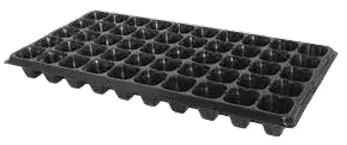
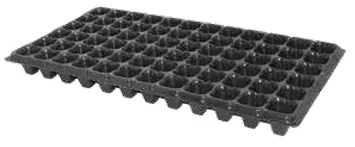
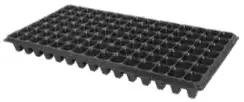

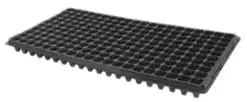
Tray 50 Hole
- Cell Count :50
- Volume per cell (ml) : 68
- Tray Height (mm) : 50
- Tray Dimension (mm) : 540×280
Tray 72 Hole
- Cell Count : 72
- Volume per cell (ml) : 55
- Tray Height (mm) : 45
- Tray Dimension (mm) : 540×280
Tray 105 Hole
- Cell Count : 105
- Volume per cell (ml) : 29
- Tray Height (mm) : 40
- Tray Dimension (mm) : 540×280
Tray 128 Hole
- Cell Count : 128
- Volume per cell (ml) : 23
- Tray Height (mm) : 40
- Tray Dimension (mm) : 540×280
Tray 200 Hole
- Cell Count : 200
- Volume per cell (ml) : 12
- Tray Height (mm) : 50
- Tray Dimension (mm) : 540×280
Modular Tray & Tube
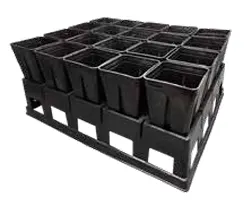
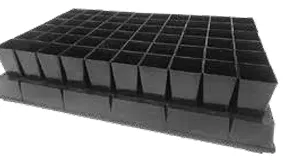
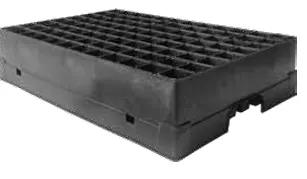
Set Carry Frame 20 + Tube
- Tube Count : 20
- Volume per tube (ml) : 320
- Tray Dimension (mm) : 290 x 360 x 90
- Tube Dimension (mm) : 65 x 65 x 107
Set Carry Frame 60 + Tube
- Tube Count : 60
- Volume per tube (ml) : 165
- Tray Dimension (mm) : 330 x 530 x 45
- Tube Dimension (mm) : 50 x 50 x 100
Set Carry Frame 96 + Tube
- Tube Count :96
- Volume per tube (ml) : 75
- Tray Dimension (mm) : 340 x 510 x 110
- Tube Dimension (mm) : 35 x 35 x 100
Our Catalogue

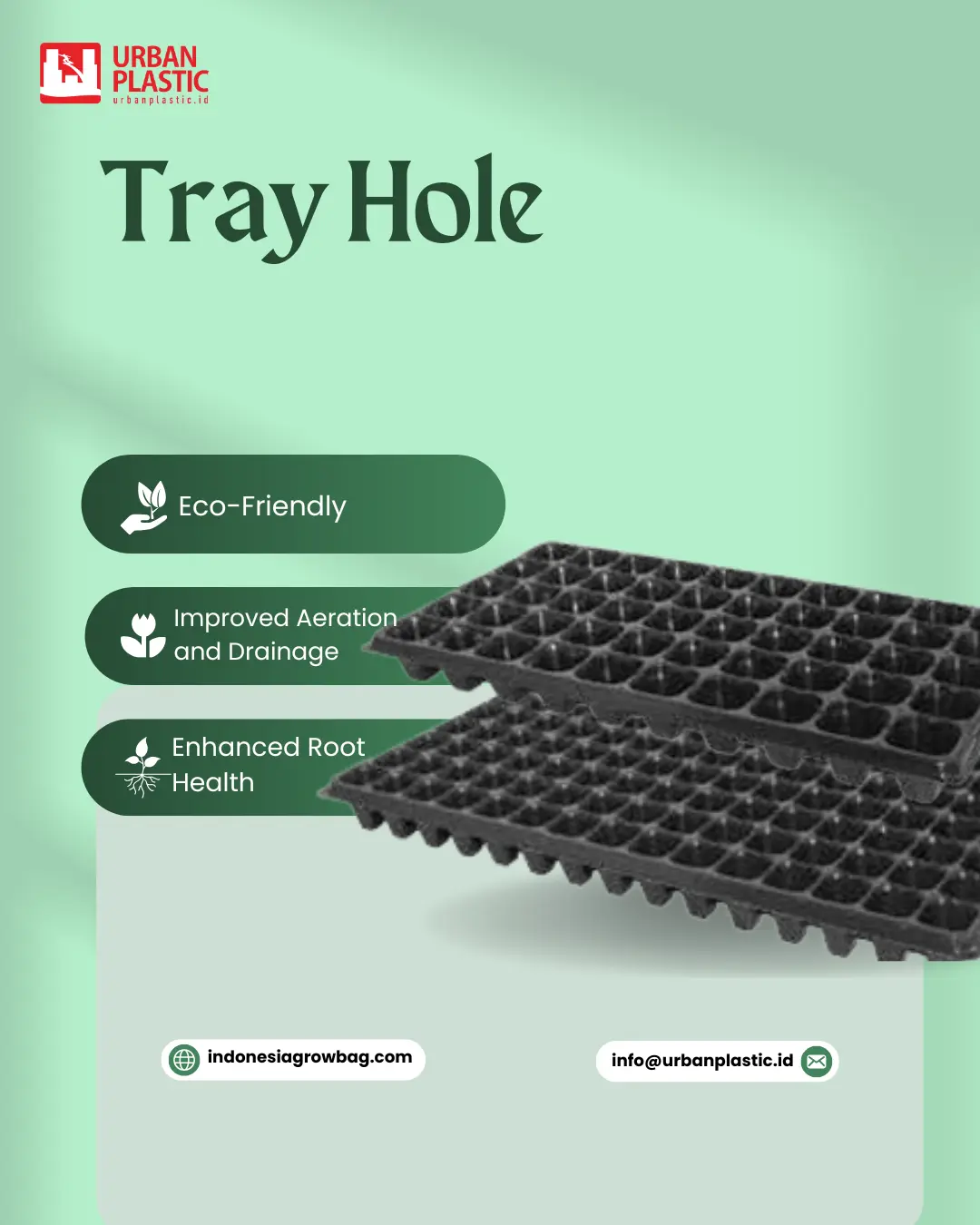
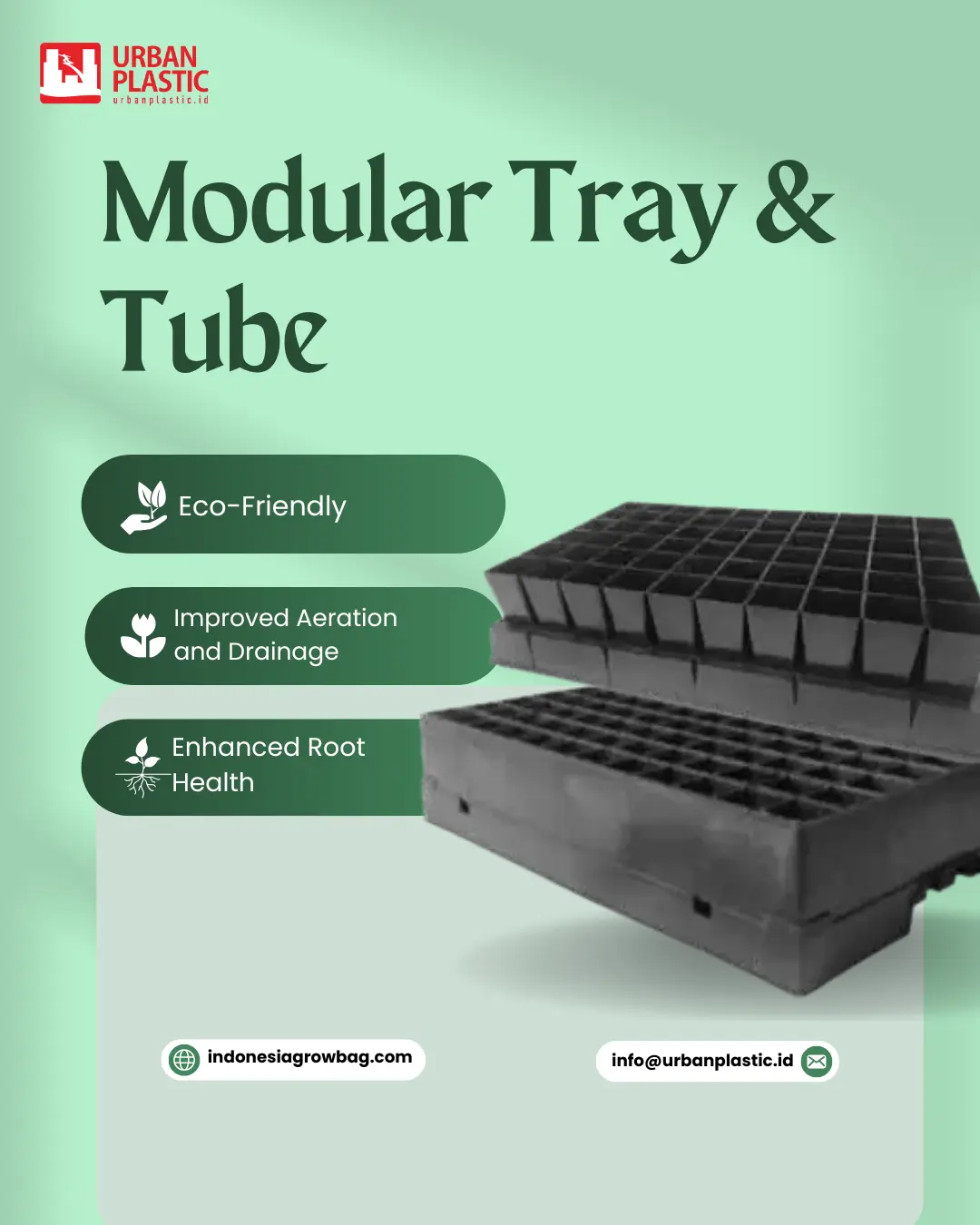
What is a growbag used for?
A grow bag is a large plastic bag filled with a growing medium that is used for growing plants. It can be used for growing fruits, vegetables, and flowers. The growing medium can be a mix of peat, compost, fertilizers, and other components, depending on the needs of the plants being grown. The bags usually have holes or slits at the bottom for drainage.
Should you put drainage holes in grow bags?
Yes, drainage holes are essential in grow bags, and most grow bags come pre-equipped with them. Proper drainage is crucial for healthy plant growth as it prevents waterlogging and root rot by allowing excess water to escape. In fact, the natural porosity of fabric grow bags already promotes air pruning and drainage, helping to avoid overwatering issues that can be encountered in non-porous containers like plastic pots. If you find that a grow bag does not have adequate drainage, you can add additional holes to assist in draining excess water.
What is the lifespan of a grow bag?
The lifespan of a grow bag depends on the material it is made from and how it is used. Some bags, particularly those made from plastic, can last for several growing seasons if handled with care, while fabric grow bags might degrade faster but are often considered more eco-friendly. Some fabric grow bags can last up to 5 years or more, depending on environmental conditions and usage.
Are grow bags better than plastic?
1. Improved Air Pruning
Grow bags allow for better aeration to the roots and prevent the roots from circling around the container (a phenomenon known as “root circling” or “girdling”). This is due to the process of air pruning, where the tip of a root that comes in contact with air dies back, encouraging the plant to develop more lateral roots, which can lead to healthier plants.
2. Better Drainage
Grow bags typically offer superior drainage compared to plastic pots, reducing the risk of overwatering.
3. Temperature Regulation
Fabric grow bags can offer better temperature regulation, preventing roots from getting too hot or too cold.
4. Portability
Grow bags are generally lightweight and easier to move around than heavy pots.
Are grow bags just compost?
Grow bags are not just compost; they are containers filled with growing medium, which can include compost along with other components like vermiculite, perlite, coir, or peat moss, depending on the specific needs of the plants you are growing. The purpose of the growing medium is to provide a suitable environment for the roots to grow, which includes retaining enough moisture and nutrients while also allowing for proper drainage and aeration.
Our Products
Planter Bag
Planter bag serves as a growing medium for cultivating plants, functioning similarly to polybags, pots, and the like. It offers an economical solution for nurturing plants in space-constrained settings.
Non Woven Polyester
Non Woven Polyester is an essential material in gardening, providing benefits such as soil stabilization, weed control, and promoting healthy plant growth, making it a favored choice for garden enthusiasts and professionals alike.
Greenhouse Plastic UV
UV greenhouse plastic is a special film designed to resist the sun’s ultraviolet radiation, extending its durability in greenhouses and protecting plants from the harmful effects of UV rays.
